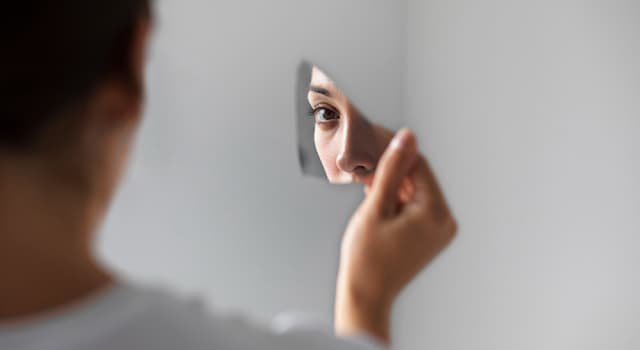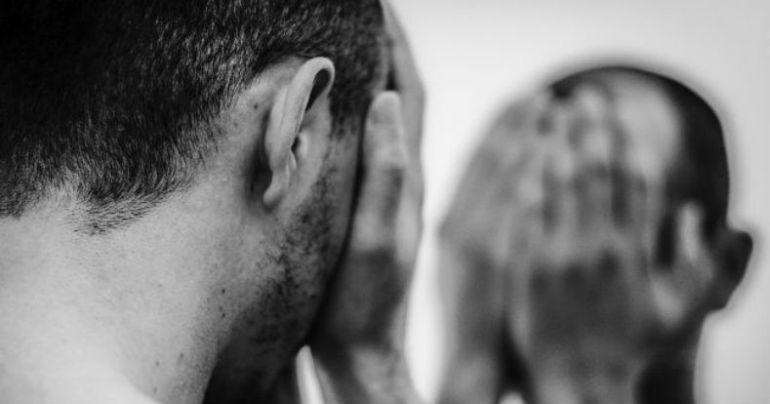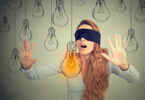Catoptrophobia leads to fear of mirrors. Learn its symptoms, causes and treatment.
Catoptrophobia, also known as eisoptrophobia or spectrophobia, is an irrational and intense fear that a person experiences when seeing their own image in a mirror. For this reason, it is something that causes panic or terror. Likewise, regardless of the object that causes the intense fear, anxiety is the common factor and the epicenter of catoptrophobia.
The fear of mirrors can be a manifestation of broader anxiety problems. That is why mirrors become a trigger for anxiety attacks.
This aspect is related to superstitious thinking, where it is believed that seeing one’s own image reflected in a mirror can lead to something bad happening, and in the same way, if the mirror breaks. It is important to take into account the cultural aspect.

Symptoms of catoptrophobia:
- Sweating.
- Feeling of suffocation and lack of air.
- Tachycardia.
- Wanting to run away and avoid mirrors.
- Dizziness and nausea.
- Intense fear and anxiety.
Why does this fear occur?
The causes can vary, but they are often related to traumatic experiences that occurred in the past:
Causes:
- Most phobias begin in childhood, adolescence or early adulthood.
- Bad experiences, Genetics, Learned behaviors, Brain structure.
- They can be caused by a stressful situation, a traumatic event. They can also be imitated from a family member who has a phobia.
- Fear of the unknown.
- Cultural or religious beliefs: in some religions it can cause fear.
- Rejection of one’s own image. When we do not have an adequate vision of ourselves, but rather the opposite, when we see ourselves reflected in a mirror, that is why we reject our own body and become obsessive. And, on the other hand, it can be part of a more serious mental disorder.
How to overcome catoptrophobia?
It is possible to lose fear through treatments.
Treatment:
- It aims to eliminate fear, to unlearn what has been learned, and to learn other ways of dealing with the problem.
- The most effective therapeutic proposal today is exposure therapy. It consists of exposing the person to the feared stimuli gradually, so that they become gradually desensitized. Likewise, teaching them anxiety management strategies, as well as restructuring maladjusted and irrational thinking.
- In this way, self-esteem and self-confidence are recovered; Ultimately, you can have control over what happens, thus eliminating the limits that the disorder itself makes the person impose on themselves.
- They can also be treated with medication.
Definitions:
“Catoptrophobia: Irrational and morbid fear of mirrors. Also known as eisoptrophobia, it is a special kind of fear in which people are afraid of looking at mirrors, passing in front of mirrors or being reflected in them.”
Anxiety: “Anxiety is a natural defense mechanism of the organism against external or internal stimuli that are perceived by the individual as threatening or dangerous and is accompanied by an unpleasant feeling or somatic symptoms of tension.”
Fear: “Fear is an unpleasant emotion caused by the perception of a danger, real or supposed, present, future or even past.”
“It is a primary emotion derived from the natural aversion to risk or threat, manifested in all animals, including humans. The maximum expression of fear is terror. In addition, fear is related to anxiety.”
Mirror: “It is a polished surface on which, after hitting it, the light is reflected following the laws of reflection.”
“Mirrors are objects that reflect almost all the light that hits their surface, due to this phenomenon we can observe our image in them.”
Remember, if you have any of the symptoms mentioned above, you may be suffering from catoptrophobia and it is important that you seek professional help.
I invite you to read another article:
Solution: New HPV vaccine. 7 benefits
Font:
https://es.wikipedia.org/wiki/Espejo
https://es.wikipedia.org/wiki/Miedo
https://es.wikipedia.org/wiki/Ansiedad









